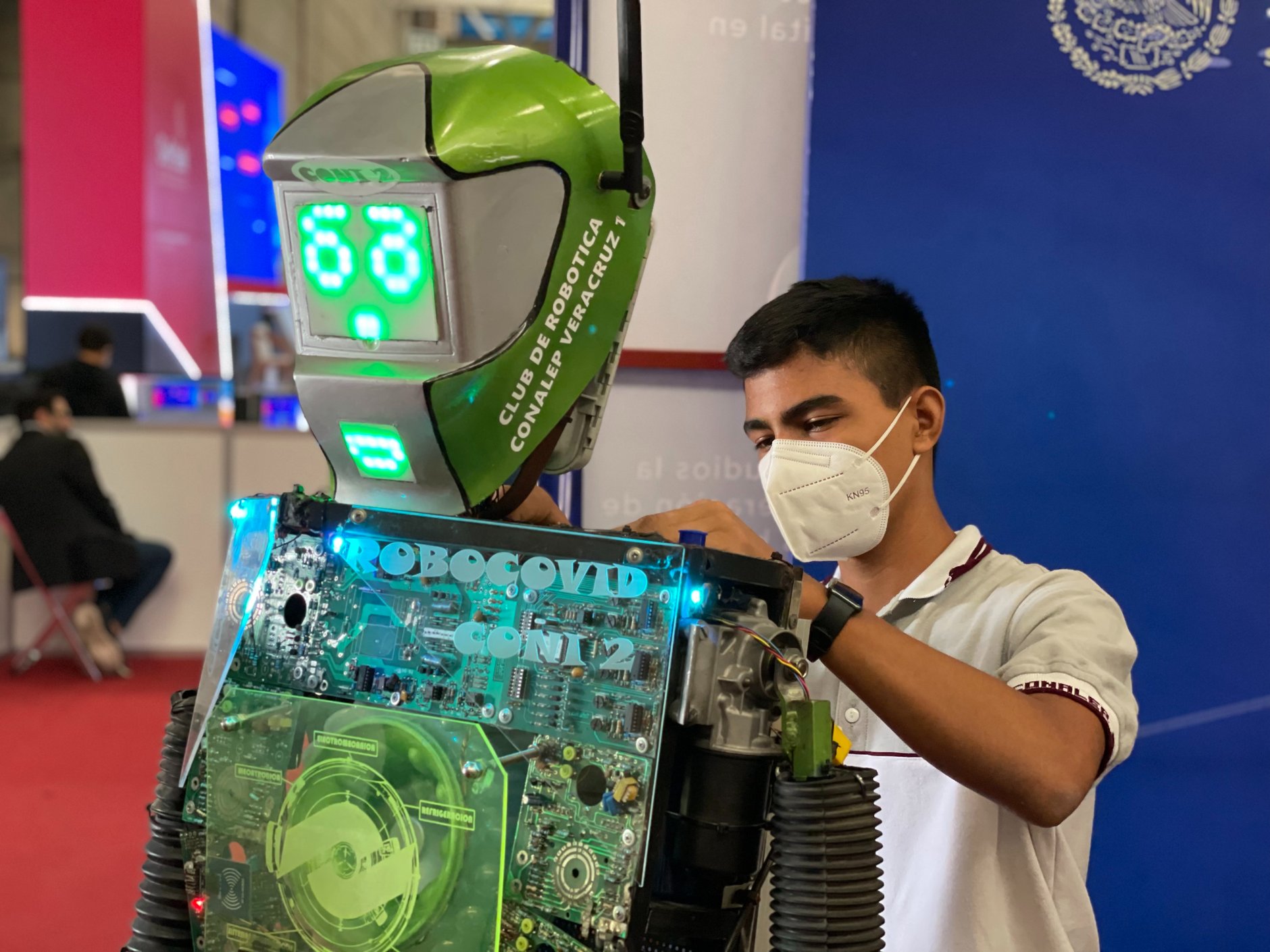MEXICO CITY (CN) — The pianist’s phrasing is stilted, his movements mechanical and precise, though lacking in the unique human touch that defines a truly great performer. However, we can forgive Don Cuco his lack of grace, for this pianist is not human. Nicknamed “El Guapo” (Good-lookin’), he is the first-ever robot to have been built in Mexico.
Don Cuco began life as a robot with the ability to read sheet music and play the piano in 1992. Since then, the country has made great strides in the fields of mechatronics, robotics, automation, and other areas of high-tech engineering.
“We’ve been making robots and satellites ever since,” said Dr. Héctor Vargas, who worked on the team that designed Don Cuco as part of his undergraduate thesis. “The field of robotics has grown significantly [in Mexico] since then.”
Vargas is now lead research professor at the Popular Autonomous University of the State of Puebla (UPAEP), which was recruited by NASA to build a small cube satellite that allows the space agency to maintain round-the-clock communication with its Globalstar satellite network. No bigger than a box of Chinese takeout, the tiny satellite dubbed AzTechSat-1 was launched on a SpaceX rocket in December 2019 and deployed from the International Space Station in February 2020. It now orbits below the Globalstar satellites, taking the place of several ground-based antenna stations.
“It seems simple, but it’s something that hadn’t been done before,” said project director Eugenio Urrutia. Researchers at UPAEP had been working on measuring and observation instruments to fly over the nearby Popocatépetl volcano when NASA asked them to build the agency a cube satellite.
“NASA recognized the potential in Mexico and at UPAEP to create the satellite the agency wanted,” said Urrutia. His team lived up to NASA’s expectations, and did so with mostly undergraduate researchers — just four of the more than 55 UPAEP students who worked on the AzTechSat-1 were postgraduates.
The tiny cube satellite is still in orbit and functioning properly today.

While most of the world outside Mexico has largely focused on the sensational topics of drug violence and “migrant caravans” in recent decades, NASA and the private sector have kept a keen eye on what Mexican engineers have been achieving in labs across the country.
“The success of the AztechSat-1 mission has generated the interest of many more Mexican universities to add aerospace to their [engineering programs], increased the interest [of] new students to study STEM careers, and motivated the venture capitalists to invest in new space companies,” said Andrés Martínez, program executive of NASA’s advanced explorations systems division of the Human Exploration and Operations Mission Directorate.
Mexico stands poised to become a world leader in what has been called the Fourth Industrial Revolution, aka Industry 4.0 — a sentiment shared at Industrial Transformation Mexico (ITM) 2021, put on by the renowned German industrial trade fair Hannover Messe in León, Guanajuato, in October. Mexico was a big hit as the guest country at the 2018 Hannover Messe fair in Germany, leading the company to bring the event to Guanajuato.
“Our executives were totally blown away by the level of technological development in Mexico,” said ITM general director Azul Ogazón. Hannover Messe was so impressed with Mexico and specifically the Bajío region — comprised of parts of the states of Guanajuato, Jalisco, Zacatecas, Michoacán, Aguascalientes, San Luis Potosí, and Querétaro — that it recently opened up permanent offices in León.
“The Bajío is the beating heart of industry in the country and where the most Industry 4.0 tech is being used,” said Ogazón. The technology on display at ITM has applications in everything from automaking to aerospace, agriculture, and other industries. And the exhibiting companies, many of which boast broad international recognition, have their eye on Mexican engineers.










